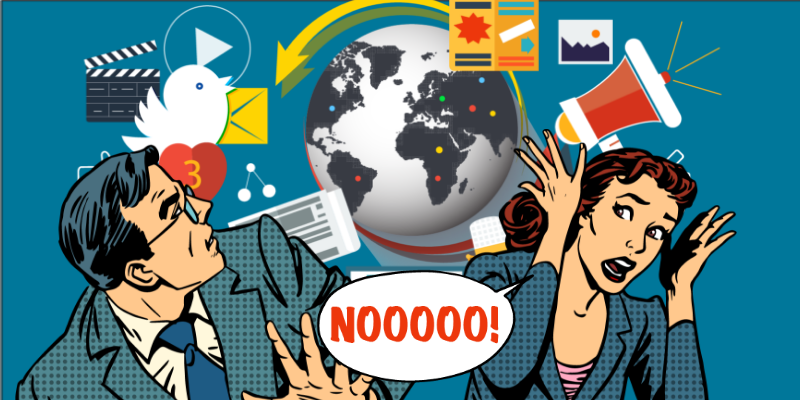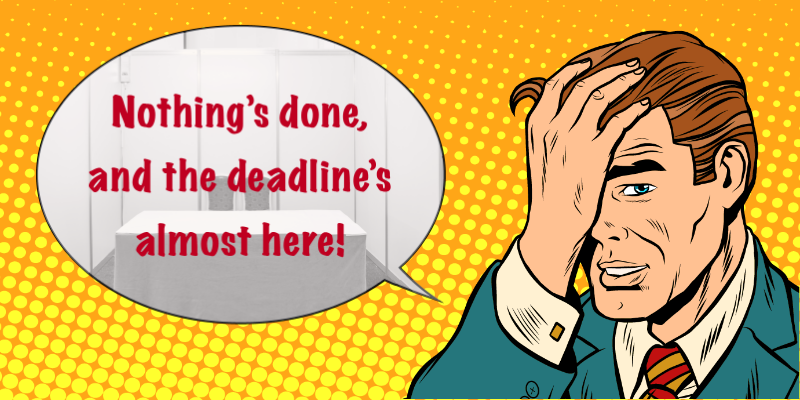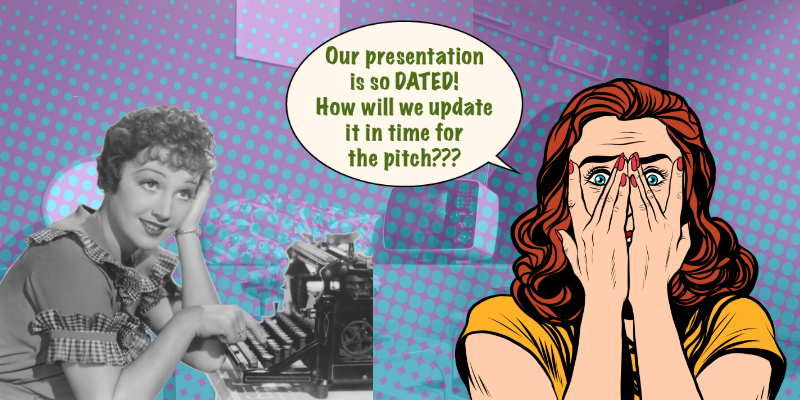Instead of freaking out, read this.
A lot of marketing begins with a panic project. You’ve been talking or thinking about “doing some marketing” for a while, but actual projects have been on the back burner. Now that back-burner is boiling over, and you are in trouble.
Panic Project #1: The Product Launch
What does a Panic Project look like? Here’s one: A long-delayed product is finally, suddenly ready for market, but no one knows it exists, and you need to make back that development investment ASAP. You need paid ads, some earned media (press releases, etc.), a web page, social media posts, some lead-generation emails, and some videos.
Panic Project #2: The Event
Here’s another Panic Project: a long time ago in a Zoom meeting far, far away, you committed to a trade show. You never exactly forgot about it, but it was so far in the distant future that it seemed like we’d all have flying cars by then. Now you’re nervous, because the future is here, the convention center wants to know what color carpet you want, your sales team is booking hotels, and you have no displays, no handouts, no plan, and no flying cars.
Panic Project #3: The pitch deck
Or, you have a killer opportunity to get in front of a huge potential customer. You could go from selling a few units per customer to thousands if you can pull this off. Unfortunately, the team page of your website and leave-behind are filled with people who don’t work there anymore. The photos of your office look like the lobby of a Holiday Inn circa 1978. Your slide presentation has been updated so many times, by so many different people, that it looks like a historical survey of clip art. Your meeting is in three weeks. Go!
Most of the time, people consider a panic project a success if they get make it to the finish line, period. Even if there were sleepless nights, exorbitant rush charges and actual crying somewhere along the way, as long as they can muddle through with a minimum of embarrassment, they count it as a win.
Can we stop here for a minute and agree that “a minimum of embarrassment” is a really low bar?
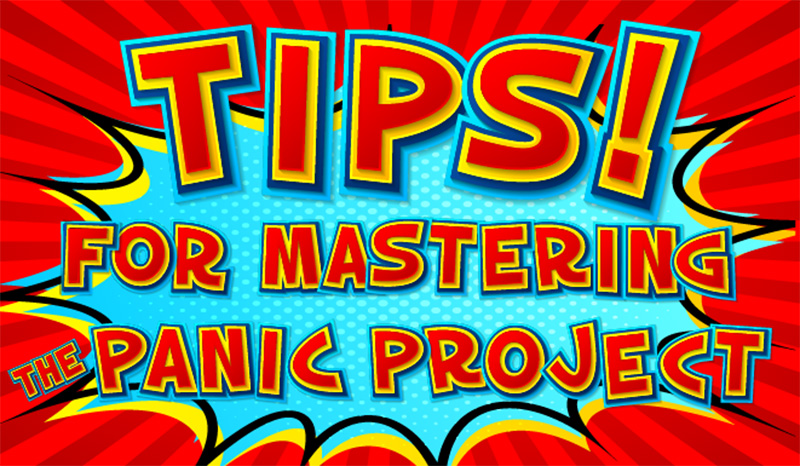 Instead, take a deep breath, sip a calming beverage, and follow a few simple tips to master the panic project. Mastering a panic project means that you:
Instead, take a deep breath, sip a calming beverage, and follow a few simple tips to master the panic project. Mastering a panic project means that you:
- Solve your immediate problem in a way that makes you look amazing
- Save time and money
- Create marketing materials that you can use again, and build on. Thus reducing the panic in future panic projects, and making you and your organization look like you have your sh*t together.
Here’s a warning: If you are the kind of person or company that really enjoys the rush of adrenaline, fear, and overspending that comes with a panic project, the rest of this article might not be for you. But I can introduce you to a very nice therapist who can help you with that problem.
 Tip 1: Write or adapt a creative brief. This will take about half a day.
Tip 1: Write or adapt a creative brief. This will take about half a day.
“Oh, my God,” you say, “we don’t have time to write a creative brief! We have to order holographic lanyards and hire a skywriting plane!”
I disagree with you there. You do have time to write a creative brief, because doing so will help you prevent making mistakes like ordering holographic lanyards and hiring a skywriting plane.
If you’ve only defined your short-term objectives in your creative brief, your panic project will get done in a way that only meets the panic project needs. If you’ve also defined your long-term objectives, and everyone knows them, you can get it done in a way that meets the panic project needs, and helps support future marketing, at the same time, for the same money. So do that.
 Tip 2: Drink deeply from the refreshing water bucket of reality — or pour it on your head. Pare down the list of what you want to do, or what you think you should do, into a more realistic list of what you can do, given the time, budget, and human resources you have available.
Tip 2: Drink deeply from the refreshing water bucket of reality — or pour it on your head. Pare down the list of what you want to do, or what you think you should do, into a more realistic list of what you can do, given the time, budget, and human resources you have available.
A good strategy is to do what smart mothers do when planning a wedding. Give each stakeholder a limited number of priority points — usually one to three. Create a realistic plan that meets as many of those priorities as you can. Everything else goes on a wish list. If there’s extra time and budget, you can add something else. Everyone gets a little of what they want, they take responsibility for how those choices are prioritized, and there’s a lot less arguing.
 Tip 3: If you need outside help, go pro. Now is not the time to pick an amateur, or a beginner. Use vendors you know and trust, or get good referrals from people you know and trust.
Tip 3: If you need outside help, go pro. Now is not the time to pick an amateur, or a beginner. Use vendors you know and trust, or get good referrals from people you know and trust.
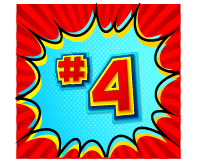 Tip 4: Stick with standard formats for print. I absolutely adore innovative uses of print and paper. When you’re going to high-value target audiences, they can be remarkably compelling and effective. Sign me up for popups, 3-D effects, involvement devices, surprising formats, and innovative ways to use tactile materials — but not during a panic project. You don’t have time to work out the kinks on a short schedule.
Tip 4: Stick with standard formats for print. I absolutely adore innovative uses of print and paper. When you’re going to high-value target audiences, they can be remarkably compelling and effective. Sign me up for popups, 3-D effects, involvement devices, surprising formats, and innovative ways to use tactile materials — but not during a panic project. You don’t have time to work out the kinks on a short schedule.
 Tip 5: Review. When the panic project is over, take a day or two to get some sleep. Then look at what you’ve done. Catalog your new materials and save your creative assets for future use. Review the project with the web and social team, sales reps, and all other stakeholders. See what you can mine for social, discuss what really “stuck” with customers and figure out how you can amplify that in the future.
Tip 5: Review. When the panic project is over, take a day or two to get some sleep. Then look at what you’ve done. Catalog your new materials and save your creative assets for future use. Review the project with the web and social team, sales reps, and all other stakeholders. See what you can mine for social, discuss what really “stuck” with customers and figure out how you can amplify that in the future.
Do these five things, and you, too will become a master of the panic project.
Bonus Tips:
Bonus Tip #6. Figure out a priority for what has to be done, and do them in priority order. If you have to let a task fall away, at least you’ll b able to do so without the entire project collapsing.
Bonus Tip #7: Don’t let anything else sneak into the scope. No side projects, no bells and whistles, no tempting brainstorms fueled by adrenaline and sleep deprivation. As much fun as it sounds to involve flaming jet skis, don’t jump on new ideas until your priorities are completed. (This is where a creative brief comes in especially handy. It serves as a reality check for your internal team and vendors.)
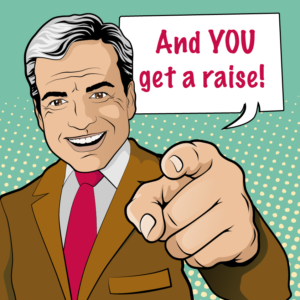 Bonus Tip #8: The best tip of all is to avoid the panic project altogether, by doing some real-world planning. Here are some places to learn more about that:
Bonus Tip #8: The best tip of all is to avoid the panic project altogether, by doing some real-world planning. Here are some places to learn more about that:
Strategy vs. Tactics: Why It’s Better To Be Eisenhower Than Batman
Marketing Plan, Creative Brief, Rationale, Results Analysis:



